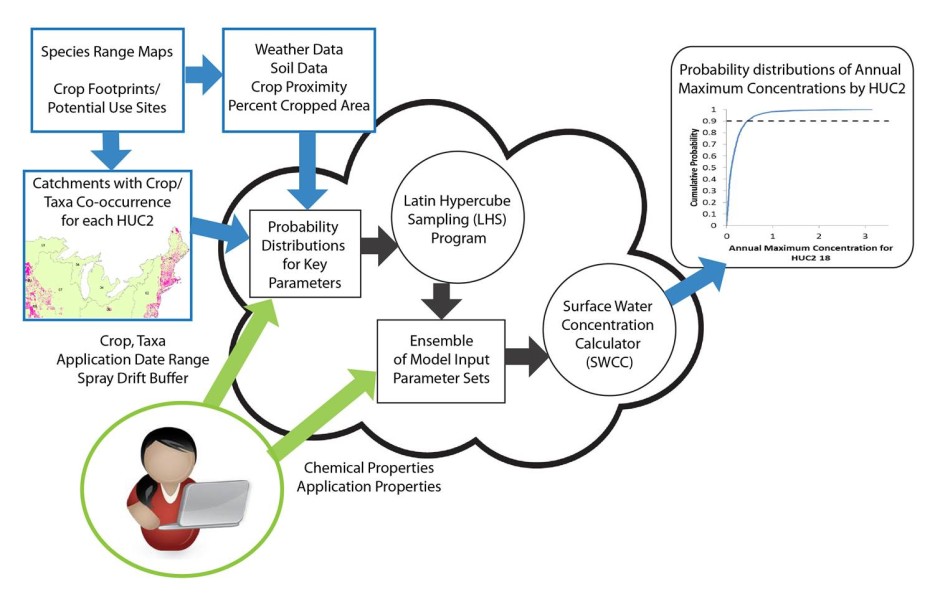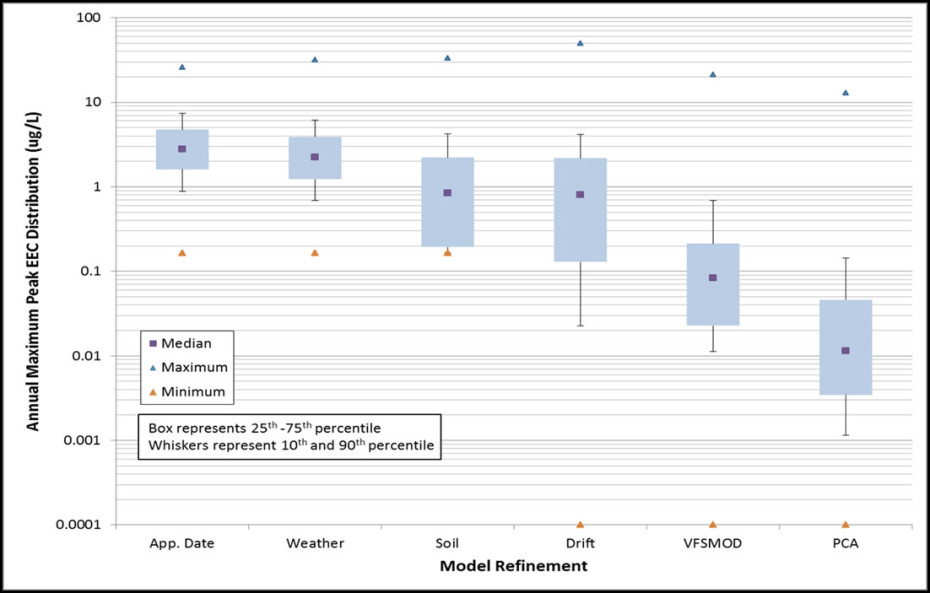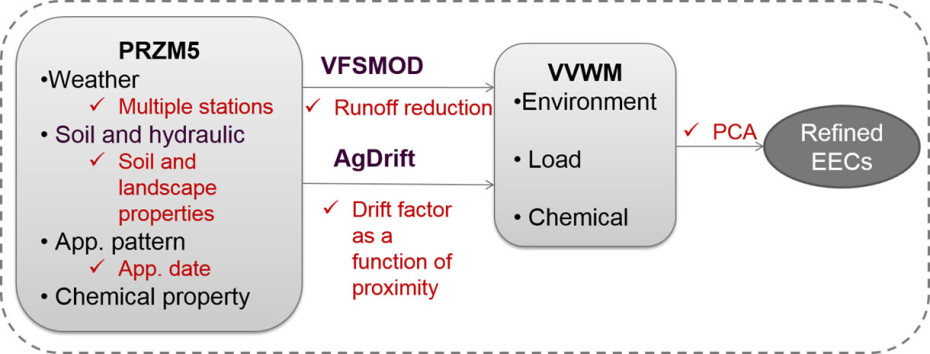Probabilistic Modeling / Uncertainty Analysis
Complex questions in environmental science are not usually answered by a single model simulation generated by one set of idealized input parameters. Rather, the best solution may be a collection or ensemble of model results that characterize the range of environmental conditions observed in the real world. We use probabilistic modeling to understand the range and likelihood of outcomes and to place quantitative bounds on uncertainty in results.
Analysis begins by generating probability distributions of model input parameters based on the best available spatial and temporal data for real world observations. Depending on the number of uncertain inputs, we select a sampling technique, such as Monte Carlo or Latin Hypercube Sampling, to create realizations of model input parameters. Then we scale our computer resources on site or in the cloud to efficiently execute hundreds to thousands of model simulations from which distributions of results are derived.
-

Cloud Modeling
-

-

We have used probabilistic modeling to:
- Better understand the distribution of pesticide exposure concentrations in the aquatic habitats of endangered species located across diverse geographic and climatic ranges
- Determine the dominant exposure pathway for distinct population segments of an endangered species
- Find the probability of exceeding an exposure threshold for an aquatic organism during a particular life stage
- Locate regions where soil and weather characteristics lead to high or low vulnerability to pesticide exposure and compare to the impact on vulnerability of implementing vegetative filter strips
- Simulate the impact of regionally and seasonally varying agricultural practices on water quality
